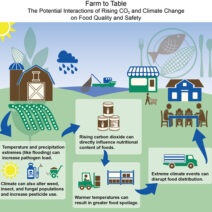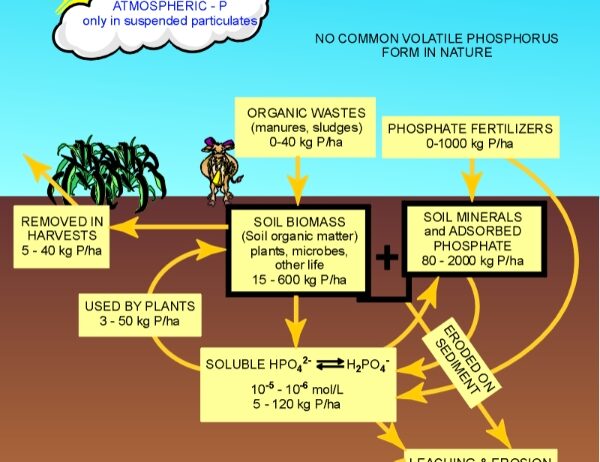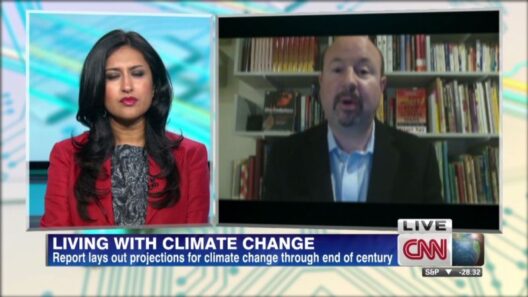The interplay of nitrogen and phosphorus cycles forms an intricate tapestry that weaves through the fabric of our ecosystems. These cycles are often overlooked, overshadowed by more conspicuous environmental issues. However, they hold a significant influence over our planet’s health, particularly in the realm of climate change. Understanding these chemical processes not only illuminates their role in nourishing life but also unveils their pernicious consequences when disrupted.
At the core of the nitrogen cycle lies nitrogen’s atmospheric existence. This inert gas constitutes approximately 78% of Earth’s atmosphere, but it is not readily available to living organisms. Nitrogen fixation is a pivotal process that converts atmospheric nitrogen (N2) into forms that are usable by plants. This transformation is achieved either biologically, by specific bacteria and archaea, or through anthropogenic means, particularly in the manufacturing of fertilizers. The latter has surged dramatically since the mid-20th century, revolutionizing agriculture but simultaneously introducing profound ecological repercussions.
Meanwhile, phosphorus, often referred to as the “lifeblood of life,” is predominantly found in terrestrial rocks and minerals. Unlike nitrogen, phosphorus does not exist in a gaseous state at typical Earth temperatures and pressures, which means it is primarily cycled through geological and biological processes. Erosion and weathering release phosphorus into soils and waterways, where it is assimilated by plants. Understanding the dynamics of phosphorus cycling is crucial because it directly impacts agricultural productivity and aquatic ecosystems.
These cycles are not standalone operations; they are intricately interwoven. Excessive application of nitrogen-rich fertilizers leads to an overabundance of nutrients in soil systems. This phenomenon, known as nutrient loading, can cause a cascade of detrimental effects on local and global environments. When nitrogen and phosphorus runoff into waterways, they can trigger algal blooms, creating dead zones—hypoxic areas within aquatic ecosystems where oxygen levels dwindle, thwarting marine life. Such occurrences starkly illustrate the fragility of ecological balance.
Moreover, these nutrient-rich blooms are a double-edged sword. Not only do they harm existing flora and fauna, but they also contribute to the production of nitrous oxide (N2O), a potent greenhouse gas with a global warming potential approximately 298 times that of carbon dioxide (CO2). The paradox lies in the fundamental role nitrogen and phosphorus play in enhancing agricultural yields while simultaneously exacerbating climate change through their excessive use and mismanagement.
The intersection of the nitrogen and phosphorus cycles with the phenomenon of global warming necessitates a paradigm shift—a new perspectives on sustainable practices is essential. Traditional agronomic methods must evolve to mitigate the adverse impacts of these cycles. Integrated nutrient management strategies can help optimize the use of fertilizers while minimizing runoff. This approach does not merely safeguard aquatic ecosystems but also promotes better soil health and resilience against climatic fluctuations.
Innovations in agricultural technology, such as precision farming, present additional avenues for mitigating the chemical impacts of nitrogen and phosphorus cycles. Mobile applications that provide real-time data on soil nutrient levels allow farmers to apply precise amounts of fertilizers. This minimizes waste and reduces the environmental footprint of agriculture, demonstrating that the future of farming can align with both productivity and sustainability.
A burgeoning interest in regenerative agriculture is also noteworthy. This holistic approach emphasizes practices that restore soil health, enhance biodiversity, and sequester carbon. Cover cropping, crop rotation, and agroforestry are among the strategies employed to boost soil fertility naturally, diminishing reliance on synthetic fertilizers. As more farmers advocate for these practices, we move toward a more symbiotic relationship with the land, fostering ecosystems that can withstand climatic changes.
Public policy plays a pivotal role in this narrative. Governments and international bodies must establish frameworks that incentivize sustainable agricultural practices. Implementing robust regulations on fertilizer use, fostering education on nutrient management, and supporting research that seeks innovative solutions are paramount in mitigating the unseen consequences of nutrient cycling. A commitment to addressing the nitrogen and phosphorus cycles can invigorate a global movement toward resilience in the face of climate change.
Despite being abstract in nature, the nitrogen and phosphorus cycles wield tangible influence over our climate and ecosystems. Acknowledging this connection is imperative; it fosters a deeper understanding of the challenges we face and obliges us to consider our role within these processes. Armed with knowledge, we can champion a future that harmonizes agricultural practices with environmental stewardship, ensuring that sustenance does not come at the expense of our planet.
The journey toward a sustainable future will undoubtedly be fraught with complexities. However, the synchronization of our understanding of the nitrogen and phosphorus cycles with active climate mitigation strategies offers a wealth of opportunities for innovation and regenerative practices. Each positive step taken toward balance in these cycles can reverberate through the intricate web of life, rippling outward to ensure a healthier planet for generations to come.







